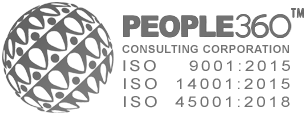Workers in many different industries and occupations can be exposed to risk factors at work, such as lifting heavy items, bending, reaching overhead, pushing and pulling heavy loads, working in awkward body postures and performing the same or similar tasks repetitively. Exposure to these known risk factors for MSDs increases a worker's risk of injury. Musculoskeletal disorders (MSDs) affect the muscles, nerves, blood vessels, ligaments and tendons.
These work-related MSDs can be prevented thru ergonomics. Ergonomics --- fitting a job to a person --- helps lessen muscle fatigue, increases productivity and reduces the number and severity of work-related MSDs. Treatments would generally involve restriction of movement, application of heat or cold, exercise, medications and surgery.
Examples of Musculoskeletal Disorders (MSDs)
- Carpal tunnel syndrome
- Tendinitis
- Rotator cuff injuries (affects the shoulder)
- Epicondylitis (affects the elbow)
- Trigger finger
- Muscle strains and low back injuries
Work related MSDs are among the most frequently reported causes of lost or restricted work time. It can greatly impact the workplace and the business.
A Process for Protecting Workers
Employers are responsible for providing a safe and healthful workplace for their workers. In the workplace, the number and severity of MSDs resulting from physical overexertion, and their associated costs, can be substantially reduced by applying ergonomic principles.
Implementing an ergonomic process is effective in reducing the risk of developing MSDs in high-risk industries as diverse as construction, food processing, firefighting, office jobs, healthcare, transportation and warehousing. The following are important elements of an ergonomic process:
- Provide Management Support- A strong commitment by management is critical to the overall success of an ergonomic process. Management should define clear goals and objectives for the ergonomic process, discuss them with their workers, assign responsibilities to designated staff members, and communicate clearly with the workforce.
- Involve Workers- A participatory ergonomic approach, where workers are directly involved in worksite assessments, solution development and implementation is the essence of a successful ergonomic process. Workers can:
- Identify and provide important information about hazards in their workplaces.
- Assist in the ergonomic process by voicing their concerns and suggestions for reducing exposure to risk factors and by evaluating the changes made as a result of an ergonomic assessment.
- Provide Training- Training is an important element in the ergonomic process. It ensures that workers are aware of ergonomics and its benefits, become informed about ergonomics related concerns in the workplace, and understand the importance of reporting early symptoms of MSDs.
- Identify Problems- An important step in the ergonomic process is to identify and assess ergonomic problems in the workplace before they result in MSDs.
- Encourage Early Reporting of MSD Symptoms- Early reporting can accelerate the job assessment and improvement process, helping to prevent or reduce the progression of symptoms, the development of serious injuries, and subsequent lost-time claims.
- Implement Solutions to Control Hazards- There are many possible solutions that can be implemented to reduce, control or eliminate workplace MSDs.
- Evaluate Progress- Established evaluation and corrective action procedures are required to periodically assess the effectiveness of the ergonomic process and to ensure its continuous improvement and long-term success. As an ergonomic process is first developing, assessments should include determining whether goals set for the ergonomic process have been met and determining the success of the implemented ergonomic solutions.
Sources:
https://www.osha.gov/SLTC/ergonomics/index.html
https://www.ccohs.ca/oshanswers/diseases/rmirsi.html


